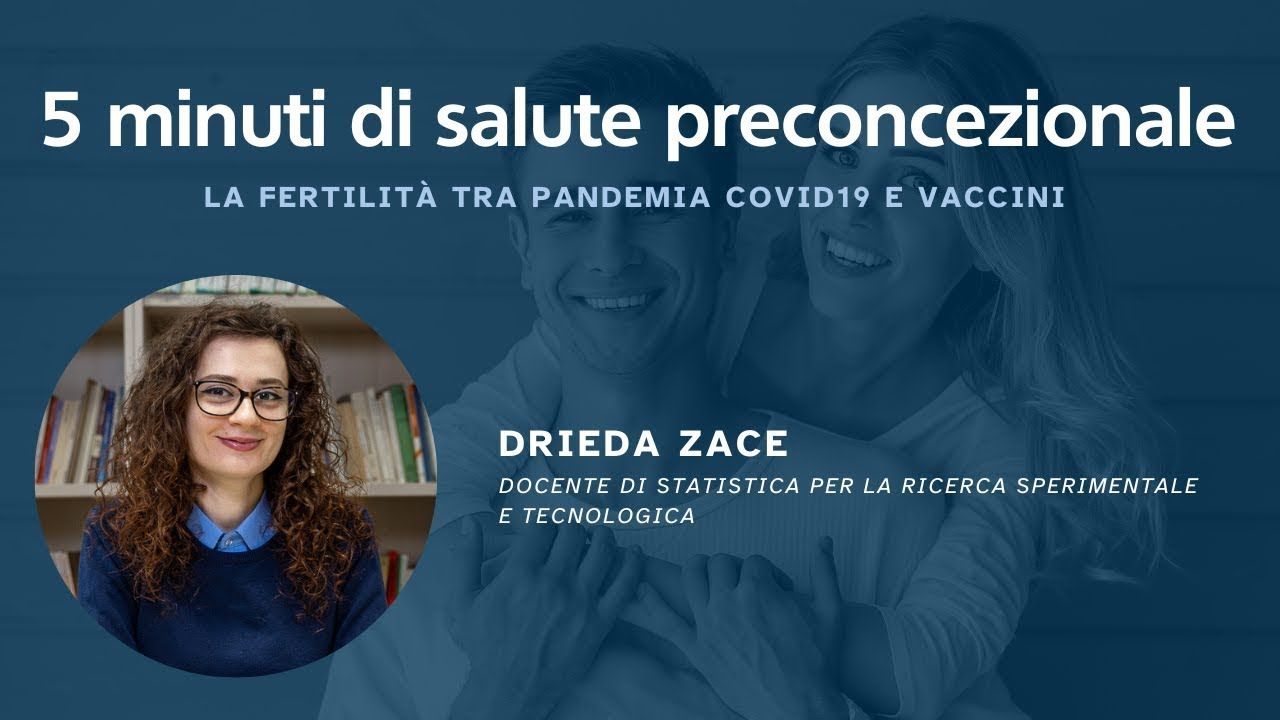Fertility between the Covid 19 pandemic and vaccines
The Covid-19 pandemic has triggered several doubts and perplexities regarding the use of vaccinations, as the cause of possible pathological pictures. Food for thought was the analysis of the possible correlation between Virus-Sars2, fertility in the two sexes and vaccinations: it was hypothesized that the vaccines administered against Covid-19 could have an impact on female and male fertility. During the experimentation of the four vaccines used in Italy, no harmful activity against fertility emerged, nor an increased risk of miscarriage and/or malformations in pregnancy. From a biological point of view, there is no reason to think that these vaccines can alter reproductive capacity.
All Covid-19 vaccines used in Italy induce an immune reaction against the Spike protein, i.e. the spike structure that allows the virus to hook onto cells and penetrate them. The hypothesis of the negative impact on fertility by the vaccine, which has had considerable echo, fueling a climate of mistrust and fear, has been disproved by comparing the structure of the two proteins, which have only a few sequences of amino acids in common. In essence, the initial doubt originated from a former Pfizer researcher who claimed the presence of similarities between the molecular structure of the Spike protein and that of Syncytin-1, produced by the human body and essential for placental development. According to the researcher, the immune system, stimulated by the vaccine to react against the Spike protein, could also have attacked Syncytin-1, thus interfering with the development of the placenta and making the vaccinated women effectively sterile. Cross-reactivity between the Spike protein and syncytin-1 has not been proven.
At the time Covid-19 vaccines were authorized, there was still little data on any risks in pregnancy, so much so that initially the doubts could be plausible and justified. In May 2021, the Italian Society of Gynecology and Obstetrics, the Association of Italian Hospital Obstetricians & Gynecologists et al. published a Position paper on the subject stating that "women planning to become pregnant, in the immediate postpartum or breastfeeding can be vaccinated depending on their age and clinical risk group".
The recommendation to wait a certain amount of time after a vaccination before trying to conceive is valid for those who receive a vaccine that contains live attenuated viruses, while the 2 messenger RNA Covid-19 vaccines do not contain viruses and the viral vector vaccines contain modified adenoviruses that are therefore unable to reproduce.
The SIGO Federation guide "Pregnancy and COVID Vaccination" also disputes any link between vaccines and fertility and states that "there is absolutely no evidence and no theoretical reason why any of the vaccines can affect the fertility of women and/or men".
And again, in consideration of the fact that pregnancy is a risk factor for serious illness from Covid-19, pregnant women must be considered a fragile population against Covid infection and vaccination is a tool to protect women and, consequently, newborns. Unvaccinated pregnant women have a substantially higher risk of needing hospital treatment for Covid-19 than vaccinated women. In addition, vaccination, by reducing the risk of contracting Covid-19 during pregnancy, protects the woman and the fetus from complications that may occur precisely related to the Covid pathology.
At the Center for Research and Studies on Procreative Health of the Catholic University of Rome, a study was conducted with a systematic review of the literature and meta-analysis that included 20 studies published up to March 2022. The meta-analysis of five studies reported sperm motility as a "fertility index" in males. No difference in motility between before and after vaccine administration has been demonstrated. On the contrary, a higher concentration of spermatozoa was found after vaccination. In addition, no significant difference was found between women vaccinated with an mRNA vaccine and those not vaccinated with regard to pregnancy rate. And again, no difference was found between men vaccinated with the Sputnik vaccine and unvaccinated men. At the endocrine level, the hormonal dosages of testosterone, FSH and LH showed no change from normal ranges .
Probably in the history of the Covid-19 vaccine, the emotional aspect of people has had a significant contribution, who have had to deal with an emergency and new situation. Scientific evidence, sometimes, is not enough. However, it is important to try to provide the right information and tools to feed people's critical thinking, especially the most skeptical ones.
read more
-
Climate change and birth rateClimate change and fertility; A general topic for a particular problem that is still little studied and little investigated. We are all realizing how much climate change impacts our lives and how necessary it is to stem it, but few have carried out an analysis of the correlation between this phenomenon and the ability to procreate. We talk about it with Prof. Walter Ricciardi.
-
Welfare and birth rateThe Welfare State, developed since the nineteenth century to mitigate social risks such as unemployment and illness, has contributed significantly to the lengthening of the average life expectancy and to the change in the role of women in society. This change has influenced the traditional view of the family and has made it more difficult for women to reconcile work and family, also affecting historical birth rates. Prof. Gilberto Turati explains the current situation and the dynamics underlying it.
-
Andrological preventionWhen we talk about andrological prevention, we are probably entering a field unknown to many. Contrary to what happens for the female counterpart. In fact, the average age of the first gynecological examination is 15 years, unlike what happens in males where the first andrological specialist check-up often comes at a much older age, at the onset of clinical symptoms or when trying to get pregnant. Why is prevention important in the andrological field? This is what Dr. Carmine Bruno explains.
